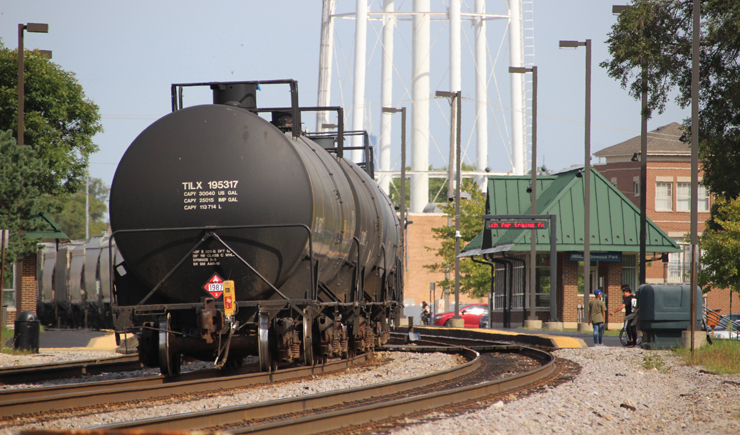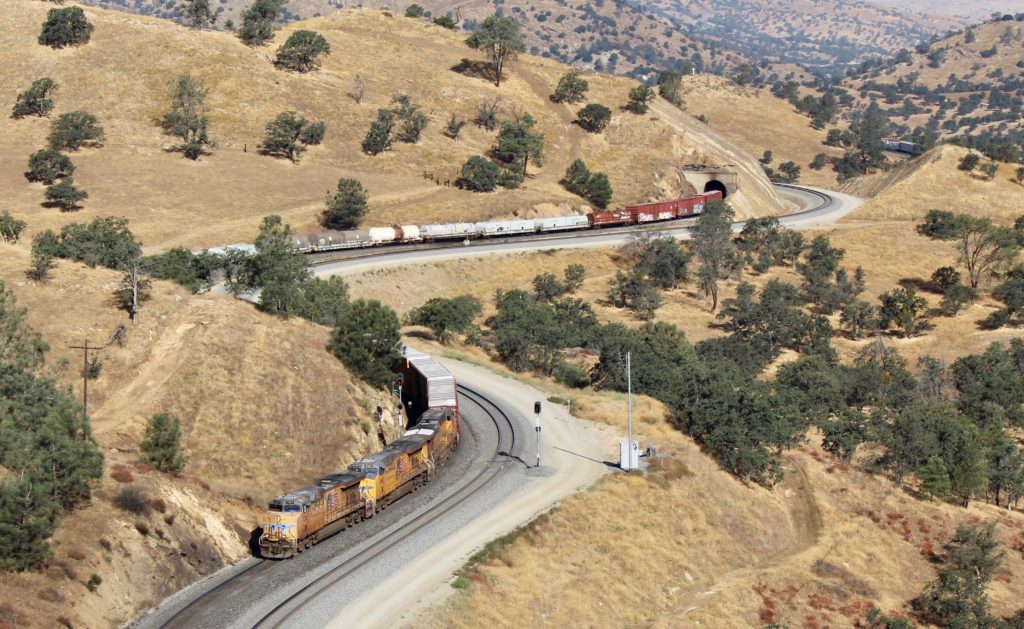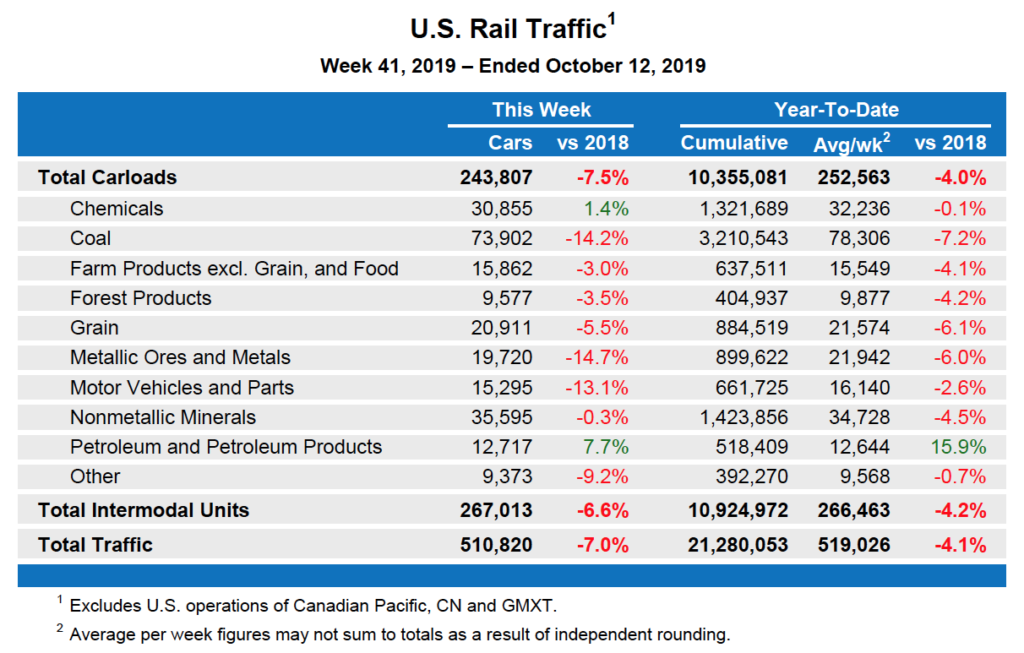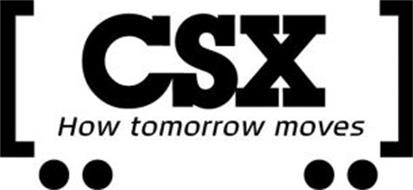
NS C44-9W No. 9732 leads empty grain train W49 at Selma, N.C., in March 2019. Michael S. Murray NORFOLK, Va. – Norfolk Southern on Wednesday reported lower third quarter profits and revenue amid broad traffic declines. The railroad’s operating income fell 2%, to $996 million, as revenue declined 4%, to $2.84 billion. Earnings per share […]
Read More…

Tank cars placarded for alcohol bring up the rear of a Canadian Pacific train passing the Elmwood Park, Ill., Metra station. While many flammable materials may be moved by tank car, liquefied natural gas is not currently among them; a Department of Transportation proposal would change that. The tank cars shown are not the type […]
Read More…

A Union Pacific merchandise train climbs the Tehachapi grade in California in September 2019. Bill Stephens OMAHA, Neb. — Union Pacific’s shift to an operating plan based on Precision Scheduled Railroading ultimately will enable the railroad to capture more traffic thanks to a combination of lower costs, better service, and a more robust merchandise network, […]
Read More…

KANSAS CITY, Mo. – Kansas City Southern’s revenue, profits, and earnings grew to record levels in the third quarter despite flat overall traffic volume, the railroad reported on Friday. Operating income rose 6%, to $282 million, as revenue grew 7%, to $747.7 million. Earnings per share, adjusted for the impact of one-time items, was up […]
Read More…

FORT WORTH, Texas — BNSF Railway has taken another step to wring more capacity out of its existing intermodal network: This week it launched a day of the week pricing system that aims to smooth peaks and valleys in volume. Currently half of the railroad’s intermodal loads are delivered to terminals between noon on Wednesday […]
Read More…

OMAHA, Neb. — Union Pacific today confirmed that it has stopped humping cars at Neff Yard in Kansas City, Mo. Neff is the fourth hump UP has idled amid its shift to Precision Scheduled Railroading. The humps at Proviso Yard in Chicago, Hinkle Yard in Oregon, and Pine Bluff Yard in Arkansas were previously mothballed […]
Read More…

OMAHA, Neb. — Union Pacific revenue and profits declined in the third quarter as the railroad’s efficiency gains and cost-cutting were not enough to offset an 8% decline in traffic volume. Operating income declined 2%, to $2.2 billion, as revenue sank 7%, to $5.5 billion. Net income also fell 2%, to $1.5 billion. Earnings per […]
Read More…
Q: Do train crews have the ability to activate or deactivate crossing lights and gates? — Richard Collingwood, Milan, Ohio A: No. Here’s why: Crossing circuits have set approaches based off of warning time required and maximum speed of the trains. The modern day crossing processors — mini computers inside a crossing gate bungalow (the metal […]
Read More…
Q: One reader recently asked why there were so many empty container trains heading away from the East Coast on railroads? Could it be the West Coast receives more loads and container trains need to be repositioned? — A Trains reader A: That East/Eest balances is one source of empty moves, but there are other […]
Read More…

Association of American Railroads WASHINGTON — The Association of American Railroads today reported U.S. rail traffic for the week ending Oct. 12, 2019. For this week, total U.S. weekly rail traffic was 510,820 carloads and intermodal units, down 7% compared with the same week last year. Total carloads for the week ending Oct. 12 were […]
Read More…

JACKSONVILLE, Fla. — CSX Transportation’s third quarter profit sank due to declines in intermodal and coal revenue and volume, the railroad announced on Wednesday afternoon. The railroad’s operating income was essentially flat, at $1.28 billion, as revenue declined 5%, to $2.97 billion. Net income declined 4%, to $856 million. Earnings per share grew 3%, to […]
Read More…
LOWELL, Ark. — Although its overall intermodal freight volumes were flat in the third quarter, J. B. Hunt Transport Services seeks to move more highway freight to trains. And Hunt officials say they’re also making their peace with Precision Scheduled Railroading, based on comments in a Tuesday earnings call with investors. Quarterly intermodal revenue was […]
Read More…








